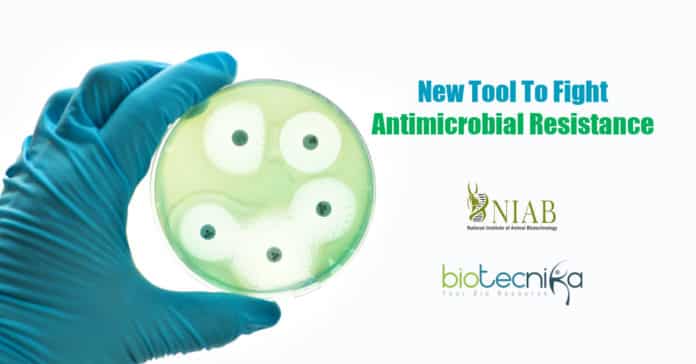Fighting antimicrobial resistance using a novel tool
Scientists at the DBT-NIAB based in Hyderabad have come up with a novel method to detect an antibiotic known as Oxytetracycline in milk samples.
This antibiotic is kenned for its wide range of antimicrobial activity and is one of the
thoroughly utilized antibiotics in veterinary practices. Its overuse intake can induce antimicrobial resistance.
This novel tool can aid in many ways as usage of milk having residual antibiotics can cause major health complications such as the development of hepatotoxicity, teratogenicity, decreased development, and metabolism. Presently, the kits utilized for antibiotic detection are shipped from abroad and also have limited availability with prices of over Rs 100/- per test.
This new technique is established by NIAB scientists promises to aid resolve the problem. It has been observed to minimize the expense without jeopardizing the quality of detection. The kit has the sensitivity to identify approximately 5 ng/ml of Oxytetracycline in cow, buffalo, and goat milk under 10 mins. The acceptable limit, according to the Ministry of Health and FSSAI, is 100 ng/ml.
The team claimed that these tests could be carried out at the doorstep of farmers, at the level of dairy industries or
milk collection centers, or by the users themselves. The price of the test will be around Rs 25-50 per test. They are in the procedure of attaining a proper companion for technology transfer.The research was performed by Komal Birader, Pankaj Kumar, T. Yathirajarao, Jeannie Alice Barla, Shashidhar Reddy, and Pankaj Suman. The outcomes of the study will be soon published in Elsevier’s journal for Food Chemistry.
About Oxytetracycline
Oxytetracycline is the 2nd of the wide range tetracycline group of antibiotics to be uncovered. It works by hindering the ability of bacteria to produce vital proteins. Without these proteins, the bacteria cannot grow, multiply and increase in numbers. Therefore, it hinders the spread of the infection, and the remaining bacteria are killed by the immune system or ultimately die.
Fighting antimicrobial resistance using a novel tool
Read also:






























